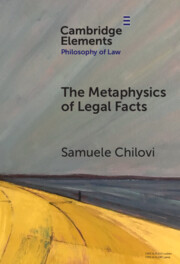Refine search
Actions for selected content:
3382833 results
Acknowledgments
-
- Book:
- Burning Swamps
- Published online:
- 06 September 2025
- Print publication:
- 25 September 2025, pp xi-xiii
-
- Chapter
- Export citation
References
-
- Book:
- Understanding the Language of Virtual Interaction
- Published online:
- 05 September 2025
- Print publication:
- 25 September 2025, pp 174-204
-
- Chapter
- Export citation
5 - Regional Climate and Weather Regimes
- from Part II - Synoptic Circulation and Weather Regimes
-
- Book:
- Synoptic Paleoclimatology
- Published online:
- 09 September 2025
- Print publication:
- 25 September 2025, pp 202-244
-
- Chapter
- Export citation
Index
-
- Book:
- Armed Citizens and Citizens in Arms
- Published online:
- 12 September 2025
- Print publication:
- 25 September 2025, pp 215-220
-
- Chapter
- Export citation
8 - Anticolonial Sociology in Latin America, 1950–1970
- from Part II - Schools of Thought
-
-
- Book:
- Anticolonialism and Social Thought
- Published online:
- 16 September 2025
- Print publication:
- 25 September 2025, pp 186-208
-
- Chapter
- Export citation
11 - The Ice Core Archive Part 2: Aerosol Tracers to Air Mass Trajectories and Weather Regimes
- from Part III - Synoptic Paleoclimate from the Natural Archive – Environmental Impact to PaleoWeather Regimes
-
- Book:
- Synoptic Paleoclimatology
- Published online:
- 09 September 2025
- Print publication:
- 25 September 2025, pp 498-536
-
- Chapter
- Export citation

The Metaphysics of Legal Facts
- Coming soon
-
- Expected online publication date:
- September 2025
- Print publication:
- 31 October 2025
-
- Element
- Export citation
Preface
-
- Book:
- Syntax and Semantics of Petri Nets
- Published online:
- 09 September 2025
- Print publication:
- 25 September 2025, pp vii-vii
-
- Chapter
- Export citation
10 - A. R. Desai’s Marxist Critique of Nationalism and of the Indian Nation-State
- from Part III - Dissident Sociologists
-
-
- Book:
- Anticolonialism and Social Thought
- Published online:
- 16 September 2025
- Print publication:
- 25 September 2025, pp 234-252
-
- Chapter
- Export citation
8 - Plurinational Juristocracy and Rights from Below at Bolivia’s Gas Frontier
-
-
- Book:
- Reckoning with Law in Excess
- Published online:
- 09 September 2025
- Print publication:
- 25 September 2025, pp 186-211
-
- Chapter
-
- You have access
- Open access
- HTML
- Export citation
Contents
-
- Book:
- Metacognitive Artificial Intelligence
- Published online:
- 08 September 2025
- Print publication:
- 25 September 2025, pp v-vii
-
- Chapter
- Export citation
Chapter 5 - The internal rules of a company
-
- Book:
- Contemporary Australian Corporate Law
- Published online:
- 11 September 2025
- Print publication:
- 25 September 2025, pp 141-168
-
- Chapter
- Export citation
8 - The Tropical to Subantarctic Glacial Archive and Response to Weather and Climate
- from Part III - Synoptic Paleoclimate from the Natural Archive – Environmental Impact to PaleoWeather Regimes
-
- Book:
- Synoptic Paleoclimatology
- Published online:
- 09 September 2025
- Print publication:
- 25 September 2025, pp 358-397
-
- Chapter
- Export citation
6 - Language Use and Identity
-
- Book:
- Applying Corpus Linguistics to Illness and Healthcare
- Published online:
- 05 September 2025
- Print publication:
- 25 September 2025, pp 85-100
-
- Chapter
-
- You have access
- Open access
- HTML
- Export citation
Chapter 10 - Media arts and meaning-making with children in S.P.A.C.E: A living inquiry storied through place and technology
-
-
- Book:
- The Arts and Meaning-Making with Children
- Published online:
- 11 September 2025
- Print publication:
- 25 September 2025, pp 212-236
-
- Chapter
- Export citation
Introduction
-
- Book:
- Burning Swamps
- Published online:
- 06 September 2025
- Print publication:
- 25 September 2025, pp 1-24
-
- Chapter
- Export citation
11 - Conclusion
-
- Book:
- Understanding the Language of Virtual Interaction
- Published online:
- 05 September 2025
- Print publication:
- 25 September 2025, pp 170-173
-
- Chapter
- Export citation
12 - Metacognition with Neural Network Verification and Repair Using Veritex
- from Part VI - Assured Machine Learning in High-Stakes Domains
-
-
- Book:
- Metacognitive Artificial Intelligence
- Published online:
- 08 September 2025
- Print publication:
- 25 September 2025, pp 212-228
-
- Chapter
- Export citation
Chapter 15 - Receivership, schemes of arrangement, small business restructuring and voluntary administration
-
- Book:
- Contemporary Australian Corporate Law
- Published online:
- 11 September 2025
- Print publication:
- 25 September 2025, pp 493-531
-
- Chapter
- Export citation
Part II - Working Environments: Extraction and the Making of Place
-
- Book:
- Burning Swamps
- Published online:
- 06 September 2025
- Print publication:
- 25 September 2025, pp 95-168
-
- Chapter
- Export citation
